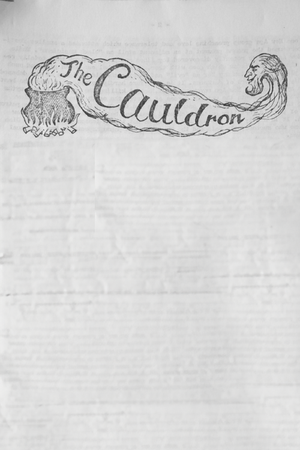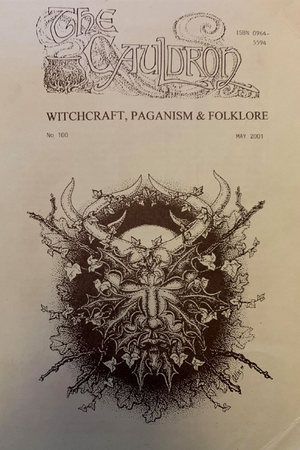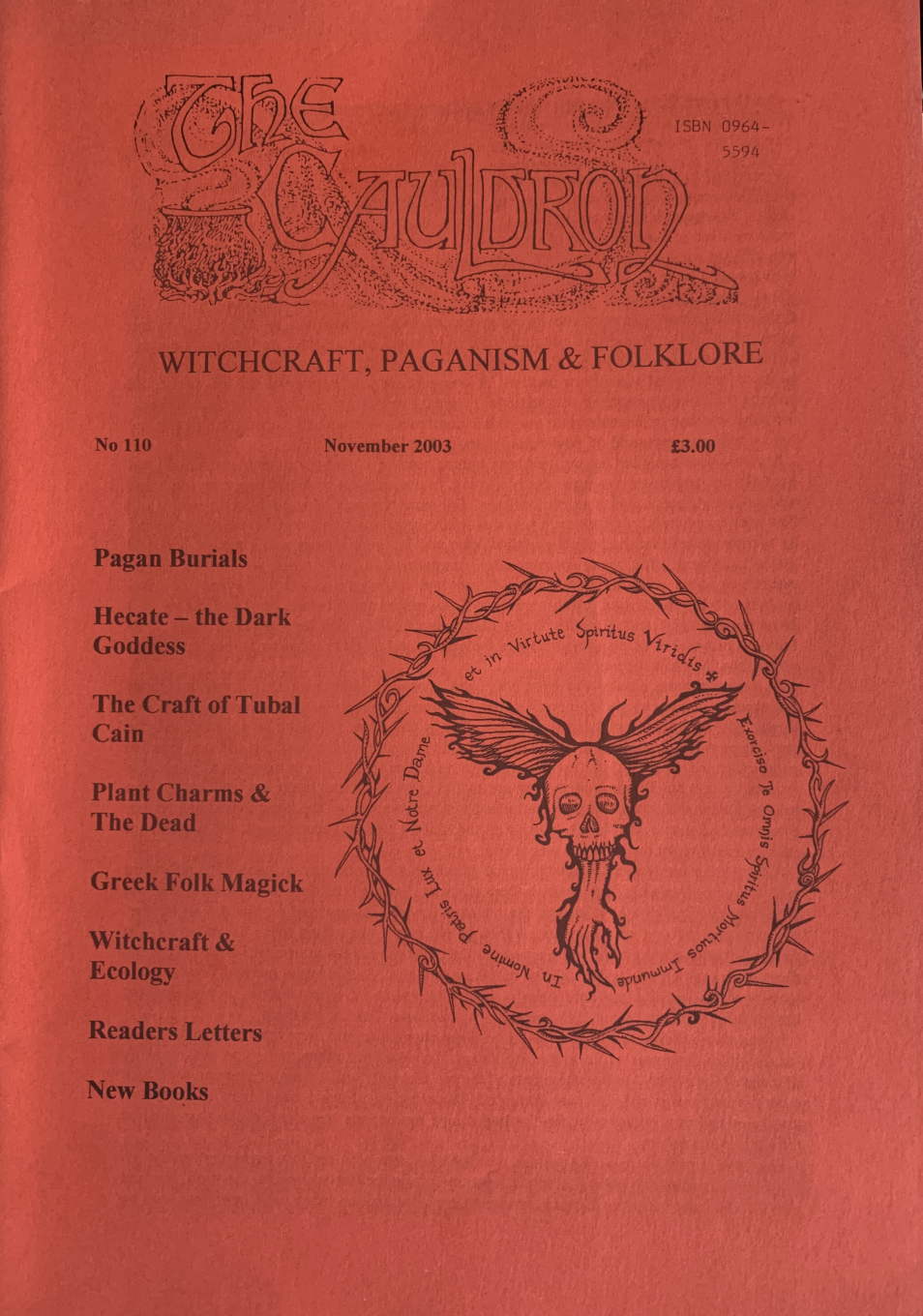Periodical Feature: Journeying Through Michael Howard’s Cauldron
Few periodicals or journals — if any — have had an impact on occult and pagan communities like Michael Howards The Cauldron. Published between 1976 and 2015, The Cauldron served as a formative space for amplifying some of the widest-ranging voices in paganism, occultism, folklore, and magic.
Early issue cover of The Cauldron.
As we will see shortly, the Occult Library staff has undergone our own journey into The Cauldron, working towards tackling a comprehensive list of this publication’s myriad issues.
First, a background on the publication and its importance to the occult community is in order.
The Cauldron is the brainchild of British occultist and author Michael Howard (1948-2015). An Anglo-Irish writer & publisher, Howard was instrumental in shaping the dialogue on British traditional witchcraft currents.
Having been published notably through houses such as Three Hands Press, and the now-defunct Capal Bann, Michael Howard is a well-established name in occult circles concerned with witchcraft.
In 1974, Howard incepted a progenitor publication of The Cauldron in the guise of Spectrum. The magazine ran for ten issues, wrapping its publication in 1976. It was during this year that Howard began publishing the now-renowned Cauldron. For the next 39 years and 156 issues, The Cauldron served as perhaps the preeminent space for small-press, periodical occult writing.
Huge swathes of written work on occult traditions, folklore, magic, mysticism, and mysteries were traversed in its pages: from stone-age artifacts to French megalithic folklore, to the traditional witchcraft of Essex, to concerns about contemporary Wiccan traditions, and even progressive Christianity.
The publication also served as the one earliest of forums for writers and practitioners who, in their own right, would go on to publish their own masterworks. Through this work, Howard was able to correspond and cross paths with many of the most unique, well-known, and obscure figures in the occult milieu.
The Cauldron, issue No. 109 (August 2003)
Yet, a paradox is present which represents a tension between the impact of the publication, and the information on its contents and issues. While the entire archive of The Cauldron is now owned by and overseen by Howard’s estate, there exists no centralized catalog of the publication’s contents and issues, even on the current webpage for the journal.
In turn, The Occult Library felt that this task would greatly benefit the occult community, ever indebted to the material offered up by the journal. As such, we began to garner information on each Cauldron issue, save for a small cluster which we are currently tracking. Often, we have gleaned this information through crowdsourced means: friends, allies, associates, and the like. All having offered up images, lists of contents, and background on the journal for our project.
The Cauldron, issue No. 100 (May 2001)
This has been no easy task, and we still strive to complete our catalog. Despite the massive publication history of The Cauldron considered, we diligently soldier on. Yet, we have resigned ourselves to understanding that full information on abstracts, content information, etc. may be out of our reach. Still, we work towards this goal.
With his in mind, we felt it would be engaging to detail the contents of a select issue of which much information is available, and of which an associate has offered images.
We’ve chosen The Cauldron, issue No. 110 (November 2003). This issue cost £3 upon publication, and details a spectrum of topics. The cover art for this edition was created by Daniel A. Schulke, and its stark red shade entices the eye:
Front cover of The Cauldron, issue No. 110 (November 2003)
The contents of this issue are as follows:
Michael Howard details The Folklore and Magick of Greece.
Shani writes on Hekate — Dark Mistress of the Soul. Shani Oates’ authorship may be inferred, as the endnote of the texts notes that the piece was written by the current maid of the Clan of Tubal-Cain.
An editorial on the continuing existence of anti-witchcraft laws.
Evangelos Rigakis offers A Re-Vision of the Greek Mystery Tradition.
Tarotstar gives a piece on Witchcraft and Ecology.
Abigail Maydon explores Natural Pagan Burials.
Andrew Chumbley offers a rite: Conjuration of the Witch-Father Tubalo Lucifer. The piece includes his atavistic artwork.
Mara Freeman on Oak, Ash & Thorn.
A section on ancient news notes Stonehenge summer solstice shock — nothing happens.
Daniel Schulke writes about Plant Charms for Binding the Dead
Terence Meaden on Men-An-Tol — Vulva of the Goddess?
Brian M. Walsh asks: The Great Debate — Did Murray meet her brief?
Finally, letters to the editor, reviews, and advertisements.
Back section of The Cauldron, issue No. 110 (November 2003)
In this issue, The Cauldron’s heavy emphasis on witchcraft is on full display. This example serves as an integral representation of the work. However, it must be re-iterated: the journal maintained a stunning diversity of content and writing. We encourage our readership to explore this by sorting through our own list of issues and their contents.
As our staff continues to aggregate and collect information on this legendary publication, we’d like to extend a word of thanks to all of those who have assisted us with contents, issue numbers, imagery, etc.
With all of this considered, we are also grateful to the rich tradition of occult publishing which The Cauldron has initiated. It has inspired us in many ways and, without this seminal work, many of our own best-loved periodicals would perhaps never have come into existence.
The Cauldron continues to set a benchmark for what is possible by bringing together a wide-range of occult voices, and it continues to serve as a sought-after artifact of the occult community from the 1970’s to the mid 2010’s.
As we now reach late-summer in the northern hemisphere, we look forward to re-establishing our pattern of publishing our blog weekly on the Mondays. We are ever grateful to the support which The Occult Library has recieved from readers, artists, authors and more.
We look forward to continuing our volunteer work to serve the community.
All the best,
— The Occult Library staff





